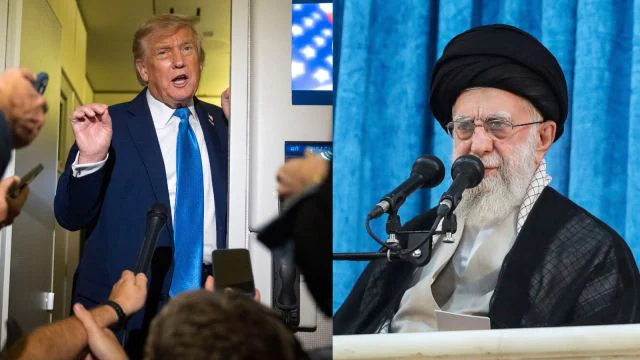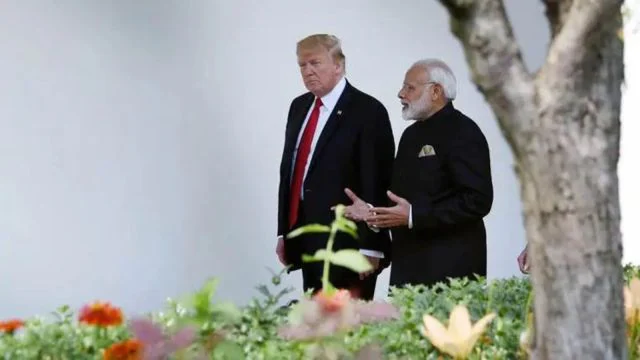As tensions erupt across the Middle East, Iran’s stern warning against U.S. involvement in the Israel conflict has sent ripples through global diplomatic and military circles. This article captures the chilling developments, backed by facts, statements, and figures, revealing the depth of escalation that could push the region into full-scale war.
Iran Threatens ‘All-Out War’ as It Warns of New Israel Strikes: The Regional Tensions That Could Lead to War
A warning out of Tehran was delivered during the pre-dawn hours of an anxious Wednesday, and it could unsettle the Middle East’s fragile balance. No wonder that Iran’s Foreign Ministry spokesman, Esmail Baghaei, mincing no words, just told Al Jazeera English that “any American intervention will be the worst one and that will lead to a further upward war in the region.” And in that one sentence was contained the urgency, fear and peril creeping through a region already buckling beneath conflict.
The caution follows a wave of violence. Israeli air raids this raid reportedly hit uranium centrifuge sites and missile production facilities in Tehran overnight and sent shockwaves through the Iranian capital. One especially large blast struck the eastern Hakimiyeh neighborhood, where a paramilitary academy run by Iran’s elite Revolutionary Guard is located. Panic spread fast. Gas lines grew. Shops shuttered. Thousands fled. And in the heart of the city, even perennially busy Grand Bazaar was shuttered.
The back and forth has turned what was once an air strike into a geopolitical forest fire and Iran has made it plain it is, if the United States plunges more deeply into the vortex, well, the game may explode into it far more brutal forms than we’ve witnessed now.
The Level of Destruction So Far
- At least 585 people have been killed in Iran since the Israeli bombing began last Friday, according to Human Rights Activists, a group in Washington.
- Of those, 239 were civilians.
The scale of the casualties over such a short period highlights what a devastating military strategy Israel is pursuing and the risk to the civilian population of Iran.
To the south, the devastation has been no less. Iran has fired over 400 missiles and several hundred drones at Israeli sites, killing at least 24 and wounding hundreds. Some of the missiles pounded residential apartment buildings in central Israel, triggering mass evacuations and raising public fear. Israel, for its part, said that it had intercepted at least 10 of the incoming missiles overnight, indicating that the degree and frequency of incoming attacks might be decreasing – but the situation is highly fluid.
Israel has not provided a full account of its defense approach, but analysts note that Israel’s recent attacks likely struck and damaged the infrastructure for missile launches by Iran. That might help explain the decrease in attacks, but among other things, Iran has yet to publicly admit to operational setbacks anywhere.
Red Lines of Iran and Calculations of Washington
Iran’s ambassador to the United Nations in Geneva, Ali Bahreini, signaled that Tehran has already communicated its limits to Washington. In a strongly worded statement, he added, “We will respond whenever we are required to.” We are paying attention to the extent of US involvement. We will reply if the United States crosses [the red line].”
Bahreini went on to say America is “complicit in what Israel is doing.” Iranian leadership is monitoring not just Washington’s actions but also its words, he said. “We are pretty vigilant about what Trump is saying. We will factor it in when we calculate and evaluate,” he added.
There is a reason why this rhetoric has been ratcheted up. US president Donald Trump called for Iran’s “unconditional surrender” in a social media post on Tuesday. He went so far as to threaten Iran’s Supreme Leader Ayatollah Ali Khamenei that the US knows where he is located – although he added that there were “no plans to kill him, at least not for now.” The uncertainty contained in those last words was bone-chilling and left an international audience gasping.
Military Posturing and Strategic Messaging
Word of this seeped out of Iran, where even the army chief, Gen. Abdul Rahim Mousavi, weighed in, confirming what many had feared – that more strikes are not just possible but on their way. “The actions we have taken so far have been for the purpose of deterring future action; we do not seek war,” he said, according to The Associated Press. “The punitive lash operation will be implemented soon.
It is a harsh sign that Iran is not done responding. For now, the attacks may be intended as a demonstration of capability and resolve, but the language hints at more serious military involvement in the coming weeks.
The larger picture is no less troubling. Iran is far tougher and more clever than many American politicians would have you believe.(scores of young men and women trying to storm the United States embassy, angered in part by the killing of demonstrators by American forces last week), but it is also demonstrating strategic restraint — at least for now. Leaders in Tehran are tiptoeing around their responses to Israel’s ongoing attacks and to any expanded role by the United States. Washington remains the only escalator to the larger war that Iran is warning about.
A Capital Under Siege
And the mood in Tehran is growing more desperate. As overnight airstrikes jolted the capital, fear was exploding even faster. Thousands of residents fled the city, AP reported. Long lines of cars appeared around gas stations, with testimony that the panic was felt across the board in consumers’ level of concern. Shops closed. Even the Grand Bazaar — usually a hubbub even in crises – stood shuttered.
These bombardments have met with very little response from Iranian officials, who have been unusually quiet. This void of communication has increased the disquiet. Citizens are left to try to piece together what they can from often scant local media reports and foreign outlets. The silence has some wondering whether the government is losing control of the narrative or perhaps even the defense apparatus.
Also read, Iran Rains Missiles On Israel, Then A Big Charge Over Nuclear Talks
The Risk of Regional Spillover
Behind this rising crisis is the more genuine risk of regional spill over. Iran’s threat to the United States is not mere posturing. It is rooted in the strategic fact that any public embrace by Washington of Israel could be interpreted by Tehran as a de facto act of war. The aftershocks of such a decision would reverberate across the Middle East.
Already, alliances and proxy networks are shifting. Lebanon, Iraq and Yemen also are host to groups backed or trained by Iran, which could come into further conflict should a full-scale war erupt. And American bases throughout the Gulf probably would be on high alert, if not under direct fire. The very geography of this potential war makes it a military planner’s nightmare – combining land, air, sea and cyber; in a region already on edge with each passing oil tanker or spy drone.
What Comes Next?
The world is watching closely. For the time being, the lines between Washington, Tel Aviv, and Tehran are hot. There is still an opening for de-escalation, but the window is closing with every new missile strike and reciprocatory warning.
Iran’s leadership is said to be weighing its options carefully. Military commanders are under pressure to hit back hard, while diplomats are working to head off the kind of confrontation that would undercut the economy and risk internal instability.
Israel is, at the same time, digging in. They believe it is necessary to hobble Iran’s missile capabilities now for the sake of long-term still to the nation’s national security interests. It’s in this “That’ll learn ’em” logic that the activists’ current action – however pedagogically, it will seem controversial – is necessary and appropriate.
And the United States? The message from President Trump has been inconsistent. On the one hand, his remarks indicate a hands-off approach – at least militarily. On the other, his remarks have put a target on the highest Iranian officials. The contradiction has plunged allies, along with adversaries, into a scramble to decipher what Washington actually does support.
Political Calculations and the Human Cost
Behind each headline, each statement, each missile, there are people. Families in Iran who have lost relatives. Israelis whose homes have been destroyed. Entire neighborhoods reduced to rubble. Businesses shuttered. Fear and uncertainty in borderland life.
- At least 585 Iranians have died since Friday.
- Of those, 239 were civilians – individuals who took no active part in the conflict.
- In Israel, at least 24 people have died, and many more have been hospitalized.
And just as during all wars, the price paid first and most painfully is borne by civilians, the cost is already far too high.
Conclusion
This escalating conflict is no longer just about rockets and rhetoric. Iran’s threat of an all-out war, coupled with U.S. ambiguity and Israel’s targeted strikes, places the entire Middle East on a knife’s edge. Unless diplomacy intervenes soon, the devastation already witnessed may only be the beginning. The human toll is mounting, and the global implications cannot be ignored. What comes next may determine the balance of power and peace in the region for decades.
FAQs
1. What triggered the latest conflict between Iran and Israel?
The conflict escalated following Israeli airstrikes on missile and uranium facilities in Tehran, prompting Iran to respond with missile attacks. The situation intensified with threats from Iran directed at U.S. involvement.
2. What has been the U.S. response to the escalation?
U.S. President Donald Trump demanded Iran’s “unconditional surrender” and issued threats against Iran’s Supreme Leader, though he stated there were no immediate plans to kill him. This has added to Iran’s warning of potential retaliation.
3. How many casualties have been reported so far?
At least 585 people have died in Iran, including 239 civilians, and at least 24 in Israel due to the ongoing conflict.
4. What is the risk of regional spillover?
There is a high risk of wider conflict involving U.S. bases, Iran-backed groups in Lebanon, Iraq, and Yemen, which could escalate into a regional war.
5. What are the chances of de-escalation?
While de-escalation is still possible, every new attack and retaliatory statement reduces that window. Diplomatic efforts must intensify quickly to prevent further conflict.






